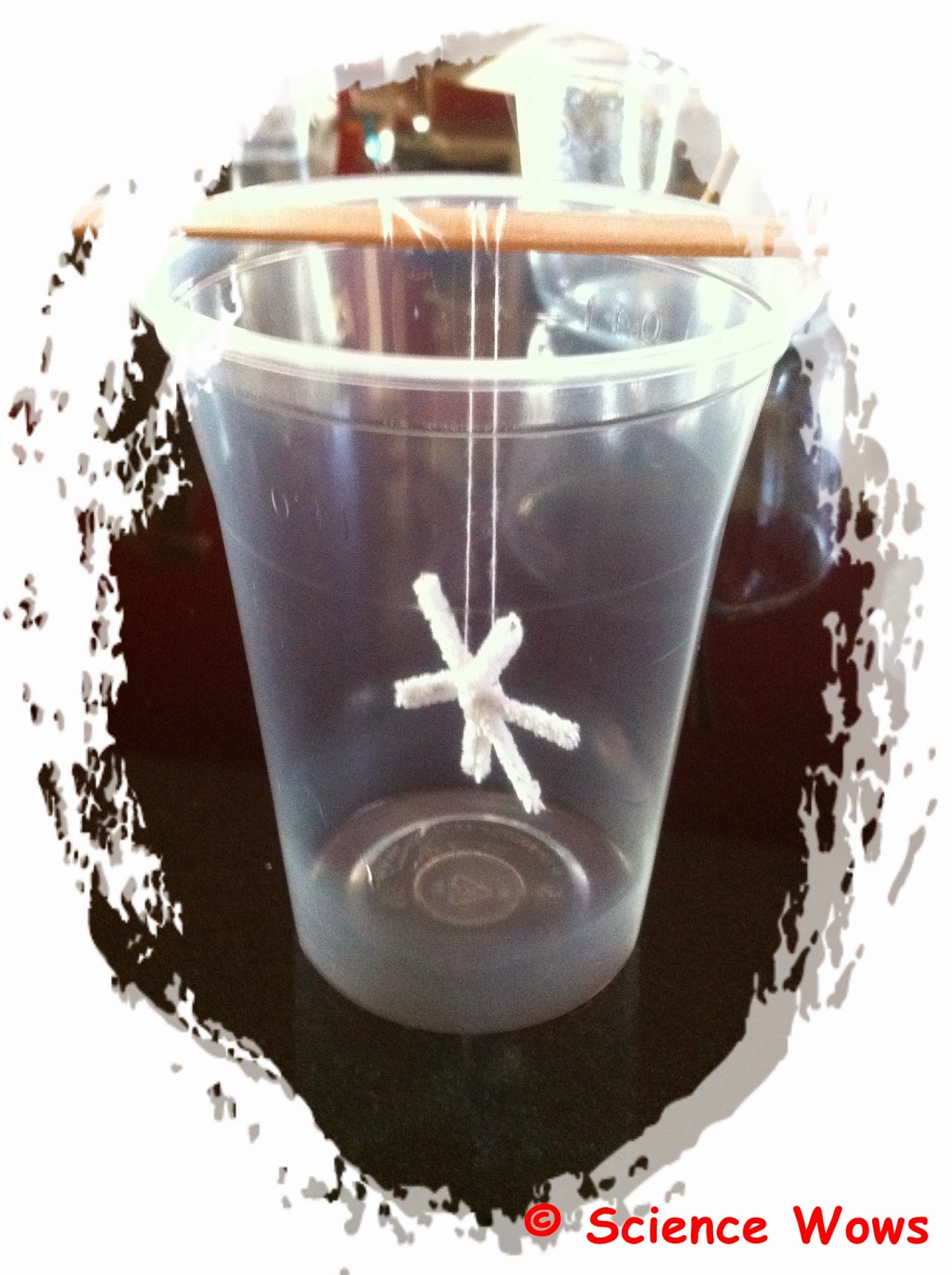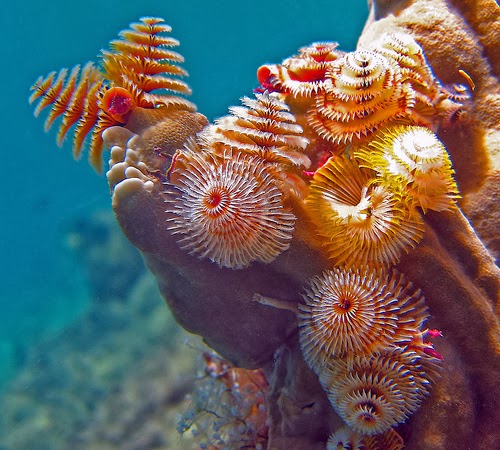 This is definitely one of my favourite experiments…. a little bit of science and a little bit of craft… resulting in some beautiful crystal decorations.
This is definitely one of my favourite experiments…. a little bit of science and a little bit of craft… resulting in some beautiful crystal decorations.
It has become a bit of a Christmas tradition in our house at this stage. Each year we make a new set of decorations to add to last years set, plus they make a lovely homemade gift for family and friends.
Adults and children alike… I highly recommend you try this one!
So here is what you will need:
 |
| Gather all your ingredients |
- Borax powder*
- Hot water
- A jug
- A stirrer
- A plastic cup or glass
- Some pipe cleaners
- Scissors
- Thread or string
- A pencil or lollipop stick
- food colouring (optional)
- Glitter (optional)
*A little note on Borax powder; you should be able to get this powder in any chemist in Ireland. It will cost anywhere between €2 and €3.50 for this 100 g quantity (which is unfortunately the only size available these days).
Borax is classified as non-toxic by the FDA and is a common ingredient in some washing powder and many skin creams.
It is therefore considered safe to use with children, if the solution splashes on their skin it will do no harm; although it is classified as non-toxic, I would obviously not suggest that anyone actually eat it!
What to do:
Firstly boil the kettle and pour the boiled water into your jug to cool a little (about 10 minutes is good); this bit is definitely for an adult to do!
While you are waiting for the water to cool make your decoration out of the pipe cleaners, it needs to be small enough to fit into your plastic cup without touching off the sides. We are going through a phase of making star shapes at the moment, quite appropriate to the season I think , but feel free to be a little more creative!
 |
| Shape your decoration from pipe cleaners… we love star shapes at the moment! |
Tie some thread to your shape and tie the other end to the lollipop stick, place the stick across the top of the cup so the pipe cleaner shape dangles in the cup. You may need to adjust the length of the thread until you get it just right. You want to be sure that the shape dangles in mid air and does not touch off the sides or bottom of the cup.
 |
| All ready for the Borax solution |
Now it is time to prepare the borax solution… you need to add the borax powder to the hot water and stir it in until no more will dissolve in the water. You will know that you have added enough when some of the powder stays at the bottom of the jug, no matter how much you mix. You will need at least two tablespoons of borax powder in 250 ml of hot water, but I would advise adding more if the powder is still dissolving.
When you are happy that no more powder will dissolve in the hot water then pour this borax solution into the cup making sure you cover the pipe cleaner shape completely. If you wish you can add a few drops of food colouring at this point and mix it into the borax solution. You may also want to add some glitter, just sprinkle a little into the cup. I like to use a fine glitter if doing this step as you don’t want bit pieces of glitter dropping to the bottom of the cup in case the crystals form on them instead of the decoration. If I am adding glitter I sprinkle a small amount onto the surface of the solution in the cup them I lift the stick up and down so the glitter sticks to the decoration. I repeat this step a few times until I am happy that the decoration is covered in enough glitter!
And that’s it… all you need now is to leave your cup somewhere safe overnight and wait with patience!
Check it the next day and you will see your decoration is covered in lots of lovely crystals! Remove the decoration from the cup and place on a piece of kitchen paper to dry.
Enjoy!!
The science bit:
This experiment teaches us about making saturated and super saturated solutions and about how certain minerals will form crystals.
If we dissolve the Borax powder in water until no more will dissolve we have created a saturated solution. The water cannot hold any more of the powder. However if we heat the water it will be able to dissolve a little more powder and this is what we do when we add the Borax to the heated water. When we heat a solution to be able to dissolve more material it is called a super saturated solution! However as the water cools it cannot hold all that extra powder any more and the Borax comes out of solution. This time it comes out as a crystal and not a powder and these crystals will form if they have a structure to form on, in this case the pipe cleaner structure.
A crystal is a solid structure made of an ordered 3-D pattern of atoms and molecules. Once they are given enough time and space to grow most minerals dissolved in water will form crystals.
Here is our little Christmas Decoration Making 2013 Album, hope you have as much fun!
We hope you enjoy this experiment and if you do get to try it out let us know how it goes for you, or even better… share photos of your own decorations with us!

























